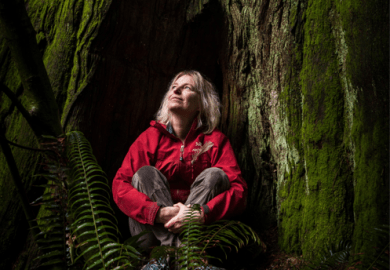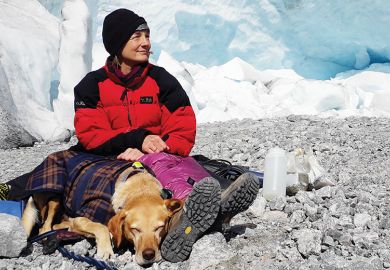A central figure in the development of geomorphology as a discipline has died.
Arthur Bloom was born in September 1928 in Waukesha County, Wisconsin, and studied geology at Miami University in Ohio (1950). He secured a Fulbright scholarship for a master’s at New Zealand’s University of Otago (1952) and, after serving as an officer in the US Navy, went on to a PhD at Yale University (1959).
In 1960, after a year as a teaching assistant at Yale, Professor Bloom took up a position as an assistant professor in the geology department at Cornell University, and he was to remain there until he retired, in 1996, as emeritus professor in the department of earth and atmospheric sciences.
Professor Bloom was best known for his pioneering work establishing the history of sea levels during the past 125,000 years. It was while stationed in the Pacific that he had first become interested in geomorphology, a field devoted to trying to understand the origins of the Earth’s topographic features. He later carried out research across virtually all the world: from Maine to Micronesia by way of Australia, China, Japan and South Korea. In later years, when the department began to focus on South America, he also worked in Argentina.
Such wide-ranging research experience formed the basis for Professor Bloom’s major book, The Surface of the Earth (1969), which was translated into German, Japanese, Polish, Portuguese and Spanish. He followed this up with Geomorphology: A Systematic Analysis of Late Cenozoic Landforms (1991), often considered the last comprehensive textbook on the whole discipline rather than just one of its more specialist subdisciplines.
Never one to remain stuck in narrow disciplinary boundaries, Professor Bloom often reached out across the university to initiate research collaborations with archaeologists, planetary scientists and soil scientists. He even started training to be a special observer on a space shuttle mission in the 1980s, but the 1986 Challenger disaster put paid to this plan.
Muawia Barazangi, another emeritus professor in Cornell’s earth sciences department, described Professor Bloom as “the complete professor”, who “paid attention to research, teaching and outreach, and was really the authority on the local and regional geology of [New York’s] Finger Lakes”. Colleagues working with the Paleontological Research Institution hope to publish his unfinished manuscript on the geomorphology of the region.
Professor Bloom’s eminence in the field was recognised in 2014 when his son Jay established the Arthur L. Bloom Fund for Geological Sciences Research in the Pacific Region to help provide scientists and students with access to the latest technology. He died on 31 May and is survived by his wife, Donna, and three sons.
Register to continue
Why register?
- Registration is free and only takes a moment
- Once registered, you can read 3 articles a month
- Sign up for our newsletter
Subscribe
Or subscribe for unlimited access to:
- Unlimited access to news, views, insights & reviews
- Digital editions
- Digital access to THE’s university and college rankings analysis
Already registered or a current subscriber?




